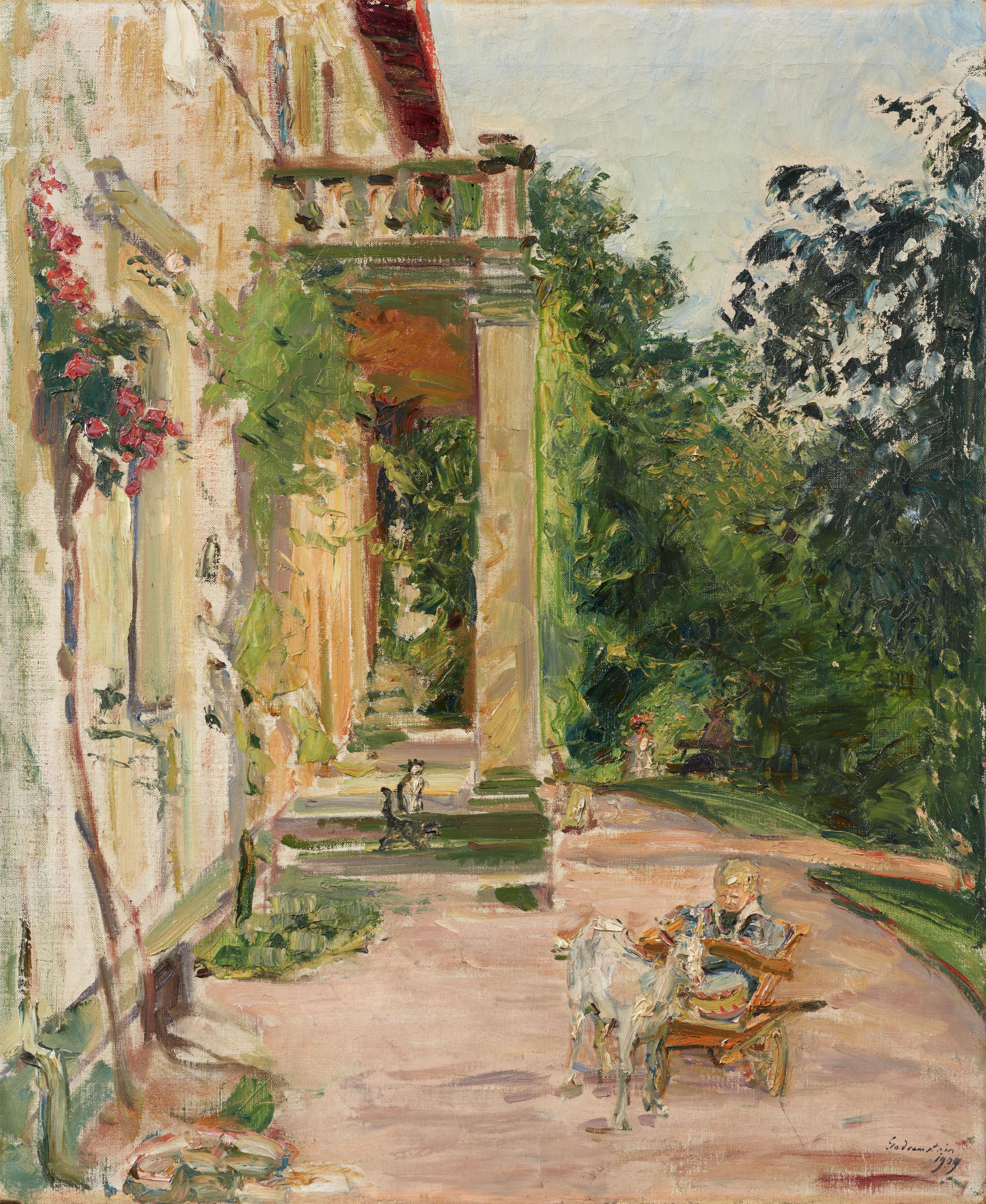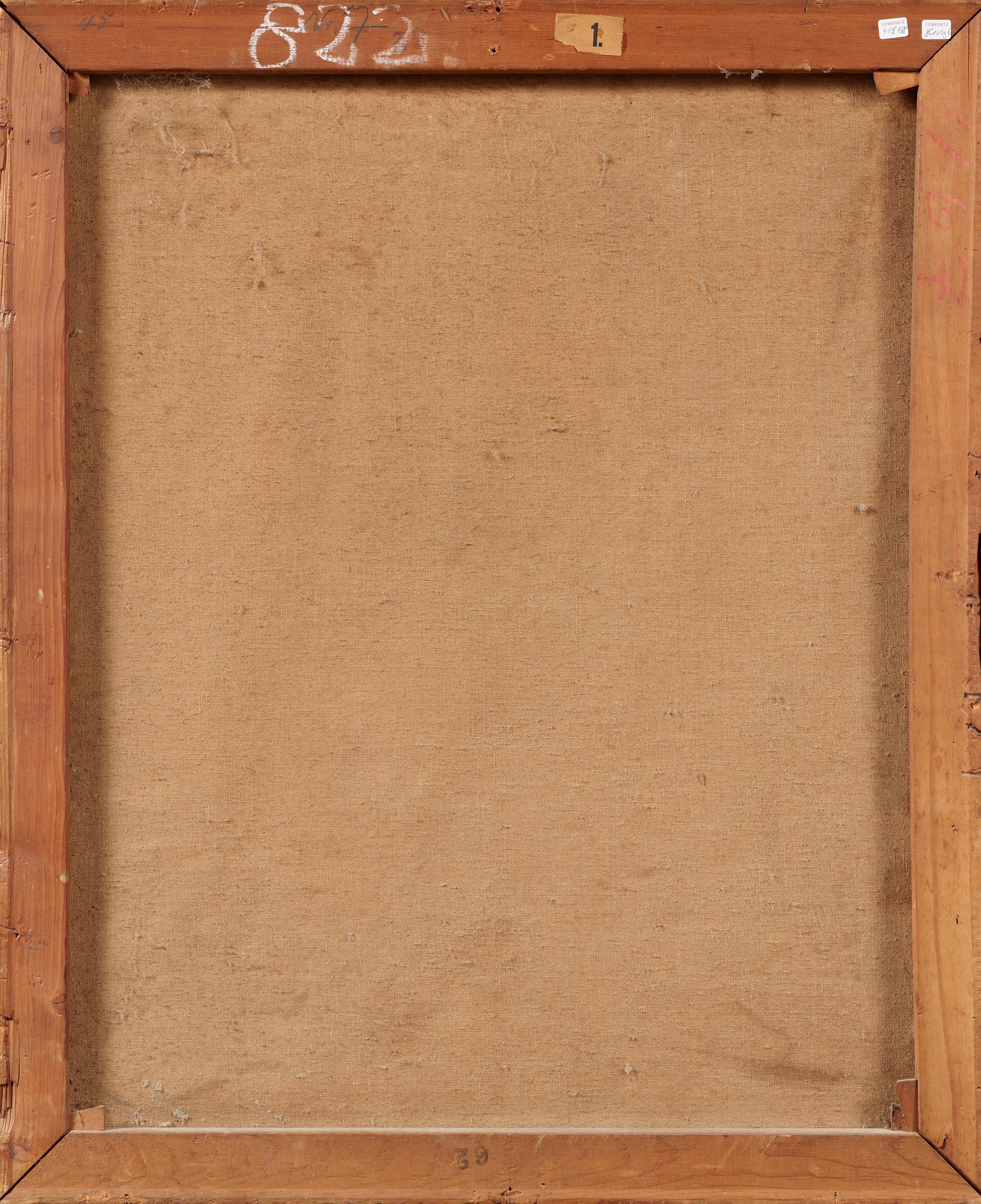Max Slevogt
Haus in Godramstein - Wolfgang mit Ziege
1909
Oil on canvas. 75.6 x 62.1 cm. Framed. Inscribed 'Godramstein 1909' in black lower right. - In very fine condition with fresh colours. Minor marginal rubbing.
We stand in radiant sunlight with the painter Max Slevogt on the driveway to the neoclassicist country house of his parents-in-law in the Palatinate village of Godramstein. To the left we see the magnificent home, the so-called “Little Palace”, which had been commissioned by Slevogt’s father-in-law Peter Finkler, a businessman from the cigar and tobacco industry. The manorial building is depicted from the side, revealing a balcony resting on pillars and the western entrance reached by way of three steps. The park, which can only be recognised through the small detail on the right, encompassed a well-kept vineyard, whose broad path led to the central axis of the building. Slevogt’s son Wolfgang, who was born in 1908, provides an eye-catcher in the driveway, where we find him seated in a handcart and accompanied by a goat. The presence of the two cats playing on the steps is probably due to Slevogt’s own affection for these animals. Here shorter and longer strokes, dabs and, in some places, impasto patches of light pink, gold-shimmering beige and every nuance of green have been used to depict a magnificent summer day in Slevogt’s adoptive homeland of the Palatinate.
From 1909 to 1913 Slevogt regularly spent the summer months in Godramstein, the home town of his wife Antonie. Life in this little village surrounded by a well-kept landscape offered Slevogt a welcome change of pace from the busy bustle of Berlin, where he had lived and also – increasingly successfully – worked since 1901. Slevogt primarily used his summer holidays in the Palatinate to develop his landscape painting, which manifested itself in pictures of the area around the house, the park and nearby locations. It was not until this period around 1909/1910 that he definitively distanced himself from the dark-toned coloration he had originally learned and then developed his intensely colourful and expressive landscapes under the influence of Édouard Manet, whose pictures he knew from Paul Cassirer’s art gallery.
Catalogue Raisonné
Imiela 1968, p. 393 annot. 13
The painting is registered in the arist's handwritten picture list under no. 240.
Certificate
We would like to thank Karoline Feulner, Max Slevogt-Forschungszentrum, GDKE, Landesmuseum Mainz for supplementary information.
We would also like to thank Bernhard Geil for supplementary information.
Provenance
In the artist's possession until 1932; Antonie Slevogt; Math. Lempertz'sche Kunstversteigerung 528, Köln, 25 Nov.1972, lot 822; Private collection, Rhineland
Literature
Die Kunst XXVII, 1926, ill. p. 331; Kunst und Künstler XXVII, 1929, ill. p. 9; Berthold Roland, Max Slevogt. Pfälzische Landschaften, Munich 1991, p. 96, with ill.
Exhibitions
Berlin 1928 (Preußische Akademie der Künste), Max Slevogt - Gemälde, Aquarelle,Pastelle, Zeichnungen - zu seinem 60. Geburtstage, cat. no. 78 with ill.




